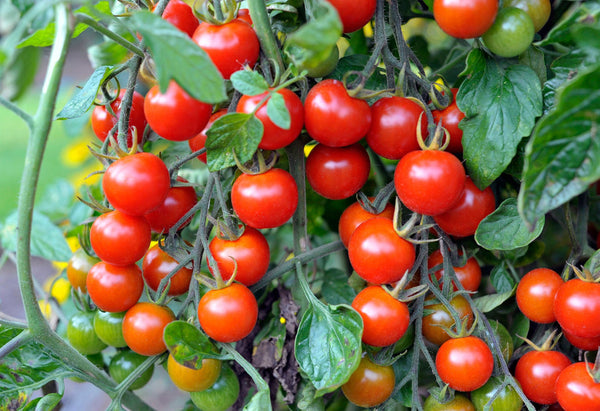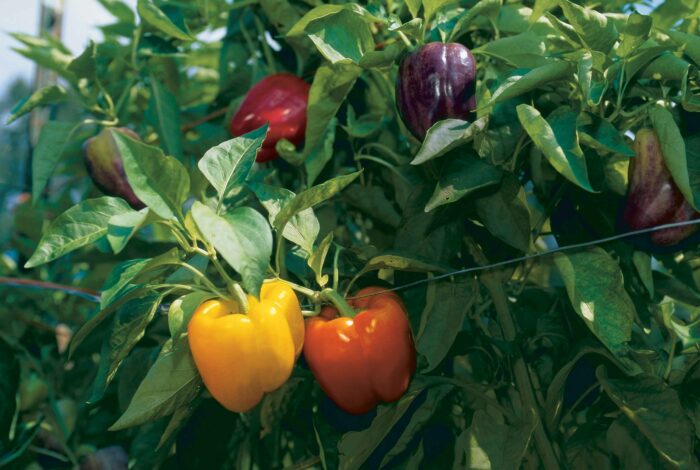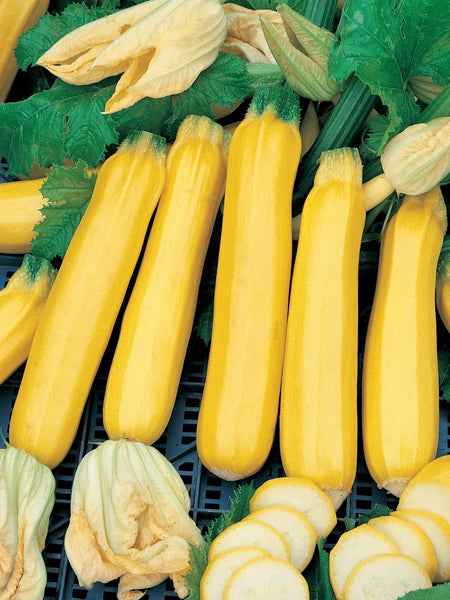Starting a vegetable garden from scratch can be an exciting and rewarding endeavor. Whether you're a seasoned gardener or a novice with a green thumb, creating your own vegetable garden allows you to enjoy the freshest produce while connecting with nature. To help you get started on the right foot, here are 10 tips to guide you through the process:

1. Assessing Your Space
● Evaluate available sunlight: Determine the areas in your yard that receive full sun, partial sun, or shade throughout the day. Most vegetables require at least 6 hours of sunlight to grow well.
● Determining soil quality: Test your soil's pH level and nutrient content using a soil testing kit. This will help you understand its composition and fertility.
● Considering space constraints: Take into account the size and layout of your yard or garden area. Consider factors like existing structures, trees, and landscaping features that may affect the layout of your vegetable garden.
2. Choosing the Right Vegetables
● Selecting vegetables suited to your climate: Research which vegetables grow best in your region and climate zone. Choose varieties that are well-adapted to your local growing conditions.
● Considering your family's preferences: Take into account the tastes and dietary preferences of your household members when selecting vegetables to grow. This ensures that you'll be growing produce that you'll actually enjoy eating.
● Assessing the space requirements of different vegetables: Some vegetables, like tomatoes and squash, require more space to grow than others. Plan your garden layout accordingly to accommodate the space needs of each crop.
3. Planning Your Garden Layout
● Deciding on garden bed size and shape: Determine the size and shape of your garden beds based on the available space and your gardening goals. Raised beds are a popular choice for vegetable gardens as they provide good drainage and allow for better soil management.
● Mapping out pathways and access points: Plan pathways and access points to make it easy to navigate your garden and access all areas for planting, watering, and harvesting.
● Incorporating companion planting strategies: Research companion planting combinations that can help improve soil fertility, repel pests, and enhance overall plant health. Integrate these combinations into your garden layout to maximize productivity.

4. Preparing the Soil
● Testing soil pH and nutrient levels: Use a soil testing kit to assess the pH level and nutrient content of your soil. This information will guide you in making any necessary amendments to optimize soil health.
● Amending soil with organic matter: Improve soil structure and fertility by incorporating organic matter such as compost, aged manure, or leaf mold. This will provide essential nutrients and encourage beneficial microbial activity.
● Ensuring proper drainage: Ensure that your garden beds have adequate drainage to prevent waterlogging, which can lead to root rot and other problems. Consider adding organic matter or perlite to improve soil drainage if necessary.
5. Starting Seeds Indoors
● Choosing the right containers and soil mix: Select containers that provide adequate drainage and space for root development, such as seed trays or peat pots. Use a high-quality seed starting mix that is light, well-draining, and sterile to prevent disease.
● Providing adequate light and warmth: Place your seed trays or pots in a warm, sunny location or under grow lights to encourage germination and healthy seedling growth. Maintain consistent temperatures between 65-75°F for optimal results.
● Transplanting seedlings at the right time: Wait until seedlings have developed sturdy stems and true leaves before transplanting them into the garden. Harden off seedlings by gradually exposing them to outdoor conditions before planting to reduce transplant shock.
6. Direct Sowing Seeds
● Preparing the soil for direct seeding: Prepare garden beds by loosening the soil with a garden fork or tiller and removing any weeds or debris. Rake the soil smooth and level before sowing seeds.
● Sowing seeds at the appropriate depth and spacing: Follow the instructions on seed packets for proper planting depth and spacing requirements. Plant seeds evenly and at the recommended depth to ensure uniform germination and growth.
● Protecting seeds from pests and environmental stress: Cover newly sown seeds with a thin layer of mulch or row covers to protect them from hungry birds, insects, and harsh weather conditions. Keep the soil evenly moist until seeds germinate and seedlings emerge.

7. Watering and Fertilizing
● Establishing a watering schedule: Water your vegetable garden regularly, ensuring that the soil remains consistently moist but not waterlogged. Use a watering can, hose, or drip irrigation system to deliver water directly to the base of plants, avoiding wetting the foliage.
● Mulching to conserve moisture: Apply a layer of organic mulch, such as straw, shredded leaves, or grass clippings, around your plants to help retain soil moisture, suppress weeds, and regulate soil temperature.
● Using organic fertilizers to promote plant growth: Feed your plants with organic fertilizers, such as compost, compost tea, or fish emulsion, to provide essential nutrients for healthy growth and abundant harvests without the risk of chemical buildup in the soil.
8. Pest and Disease Management
● Identifying common garden pests and diseases: Learn to recognize the signs of common garden pests, such as aphids, caterpillars, and fungal diseases like powdery mildew and blight. Regularly inspect your plants for symptoms of pest infestation or disease.
● Implementing preventive measures: Take proactive steps to prevent pest and disease problems in your garden, such as practicing crop rotation, using floating row covers, and maintaining good garden hygiene by removing diseased plant debris.
● Using natural pest control methods: Control garden pests using natural methods, such as handpicking insects, introducing beneficial insects like ladybugs and praying mantises, and using organic pesticides like neem oil or insecticidal soap sparingly and as a last resort.
9. Maintaining Your Garden
● Weeding regularly to reduce competition: Keep your garden beds free of weeds by regularly pulling or hoeing them to prevent them from competing with your vegetable plants for nutrients, water, and sunlight.
● Monitoring plant health and growth: Keep an eye on your plants for signs of nutrient deficiencies, pest infestations, or disease outbreaks. Address any issues promptly to prevent them from spreading and affecting the overall health of your garden.
● Harvesting vegetables at peak ripeness: Harvest your vegetables when they are ripe and ready to eat for the best flavor, texture, and nutritional value. Check your plants regularly and harvest vegetables as they mature to encourage continued production throughout the growing season.

10. Extending the Growing Season
● Using season extension techniques: Extend your growing season by using season extension techniques such as row covers, cold frames, or hoop houses to protect plants from frost and cold temperatures in the spring and fall.
● Planting cold-tolerant vegetables: Choose cold-tolerant vegetable varieties like kale, spinach, carrots, and radishes that can withstand cooler temperatures and continue to produce well into the fall and winter months.
● Preserving harvests through canning, freezing, or drying: Preserve your bountiful harvests by canning, freezing, or drying excess fruits and vegetables for later use. Canning preserves can be stored for long periods, while frozen or dried foods can be enjoyed throughout the year.
Conclusion
Embarking on the journey of starting a vegetable garden from scratch is a fulfilling and rewarding experience. By following these 10 tips, you'll be well-equipped to start a successful vegetable garden from scratch and enjoy a bountiful harvest of fresh, homegrown produce all season long. Happy gardening!

1. Assessing Your Space
● Evaluate available sunlight: Determine the areas in your yard that receive full sun, partial sun, or shade throughout the day. Most vegetables require at least 6 hours of sunlight to grow well.
● Determining soil quality: Test your soil's pH level and nutrient content using a soil testing kit. This will help you understand its composition and fertility.
● Considering space constraints: Take into account the size and layout of your yard or garden area. Consider factors like existing structures, trees, and landscaping features that may affect the layout of your vegetable garden.
2. Choosing the Right Vegetables
● Selecting vegetables suited to your climate: Research which vegetables grow best in your region and climate zone. Choose varieties that are well-adapted to your local growing conditions.
● Considering your family's preferences: Take into account the tastes and dietary preferences of your household members when selecting vegetables to grow. This ensures that you'll be growing produce that you'll actually enjoy eating.
● Assessing the space requirements of different vegetables: Some vegetables, like tomatoes and squash, require more space to grow than others. Plan your garden layout accordingly to accommodate the space needs of each crop.
3. Planning Your Garden Layout
● Deciding on garden bed size and shape: Determine the size and shape of your garden beds based on the available space and your gardening goals. Raised beds are a popular choice for vegetable gardens as they provide good drainage and allow for better soil management.
● Mapping out pathways and access points: Plan pathways and access points to make it easy to navigate your garden and access all areas for planting, watering, and harvesting.
● Incorporating companion planting strategies: Research companion planting combinations that can help improve soil fertility, repel pests, and enhance overall plant health. Integrate these combinations into your garden layout to maximize productivity.

4. Preparing the Soil
● Testing soil pH and nutrient levels: Use a soil testing kit to assess the pH level and nutrient content of your soil. This information will guide you in making any necessary amendments to optimize soil health.
● Amending soil with organic matter: Improve soil structure and fertility by incorporating organic matter such as compost, aged manure, or leaf mold. This will provide essential nutrients and encourage beneficial microbial activity.
● Ensuring proper drainage: Ensure that your garden beds have adequate drainage to prevent waterlogging, which can lead to root rot and other problems. Consider adding organic matter or perlite to improve soil drainage if necessary.
5. Starting Seeds Indoors
● Choosing the right containers and soil mix: Select containers that provide adequate drainage and space for root development, such as seed trays or peat pots. Use a high-quality seed starting mix that is light, well-draining, and sterile to prevent disease.
● Providing adequate light and warmth: Place your seed trays or pots in a warm, sunny location or under grow lights to encourage germination and healthy seedling growth. Maintain consistent temperatures between 65-75°F for optimal results.
● Transplanting seedlings at the right time: Wait until seedlings have developed sturdy stems and true leaves before transplanting them into the garden. Harden off seedlings by gradually exposing them to outdoor conditions before planting to reduce transplant shock.
6. Direct Sowing Seeds
● Preparing the soil for direct seeding: Prepare garden beds by loosening the soil with a garden fork or tiller and removing any weeds or debris. Rake the soil smooth and level before sowing seeds.
● Sowing seeds at the appropriate depth and spacing: Follow the instructions on seed packets for proper planting depth and spacing requirements. Plant seeds evenly and at the recommended depth to ensure uniform germination and growth.
● Protecting seeds from pests and environmental stress: Cover newly sown seeds with a thin layer of mulch or row covers to protect them from hungry birds, insects, and harsh weather conditions. Keep the soil evenly moist until seeds germinate and seedlings emerge.

7. Watering and Fertilizing
● Establishing a watering schedule: Water your vegetable garden regularly, ensuring that the soil remains consistently moist but not waterlogged. Use a watering can, hose, or drip irrigation system to deliver water directly to the base of plants, avoiding wetting the foliage.
● Mulching to conserve moisture: Apply a layer of organic mulch, such as straw, shredded leaves, or grass clippings, around your plants to help retain soil moisture, suppress weeds, and regulate soil temperature.
● Using organic fertilizers to promote plant growth: Feed your plants with organic fertilizers, such as compost, compost tea, or fish emulsion, to provide essential nutrients for healthy growth and abundant harvests without the risk of chemical buildup in the soil.
8. Pest and Disease Management
● Identifying common garden pests and diseases: Learn to recognize the signs of common garden pests, such as aphids, caterpillars, and fungal diseases like powdery mildew and blight. Regularly inspect your plants for symptoms of pest infestation or disease.
● Implementing preventive measures: Take proactive steps to prevent pest and disease problems in your garden, such as practicing crop rotation, using floating row covers, and maintaining good garden hygiene by removing diseased plant debris.
● Using natural pest control methods: Control garden pests using natural methods, such as handpicking insects, introducing beneficial insects like ladybugs and praying mantises, and using organic pesticides like neem oil or insecticidal soap sparingly and as a last resort.
9. Maintaining Your Garden
● Weeding regularly to reduce competition: Keep your garden beds free of weeds by regularly pulling or hoeing them to prevent them from competing with your vegetable plants for nutrients, water, and sunlight.
● Monitoring plant health and growth: Keep an eye on your plants for signs of nutrient deficiencies, pest infestations, or disease outbreaks. Address any issues promptly to prevent them from spreading and affecting the overall health of your garden.
● Harvesting vegetables at peak ripeness: Harvest your vegetables when they are ripe and ready to eat for the best flavor, texture, and nutritional value. Check your plants regularly and harvest vegetables as they mature to encourage continued production throughout the growing season.

10. Extending the Growing Season
● Using season extension techniques: Extend your growing season by using season extension techniques such as row covers, cold frames, or hoop houses to protect plants from frost and cold temperatures in the spring and fall.
● Planting cold-tolerant vegetables: Choose cold-tolerant vegetable varieties like kale, spinach, carrots, and radishes that can withstand cooler temperatures and continue to produce well into the fall and winter months.
● Preserving harvests through canning, freezing, or drying: Preserve your bountiful harvests by canning, freezing, or drying excess fruits and vegetables for later use. Canning preserves can be stored for long periods, while frozen or dried foods can be enjoyed throughout the year.
Conclusion
Embarking on the journey of starting a vegetable garden from scratch is a fulfilling and rewarding experience. By following these 10 tips, you'll be well-equipped to start a successful vegetable garden from scratch and enjoy a bountiful harvest of fresh, homegrown produce all season long. Happy gardening!









